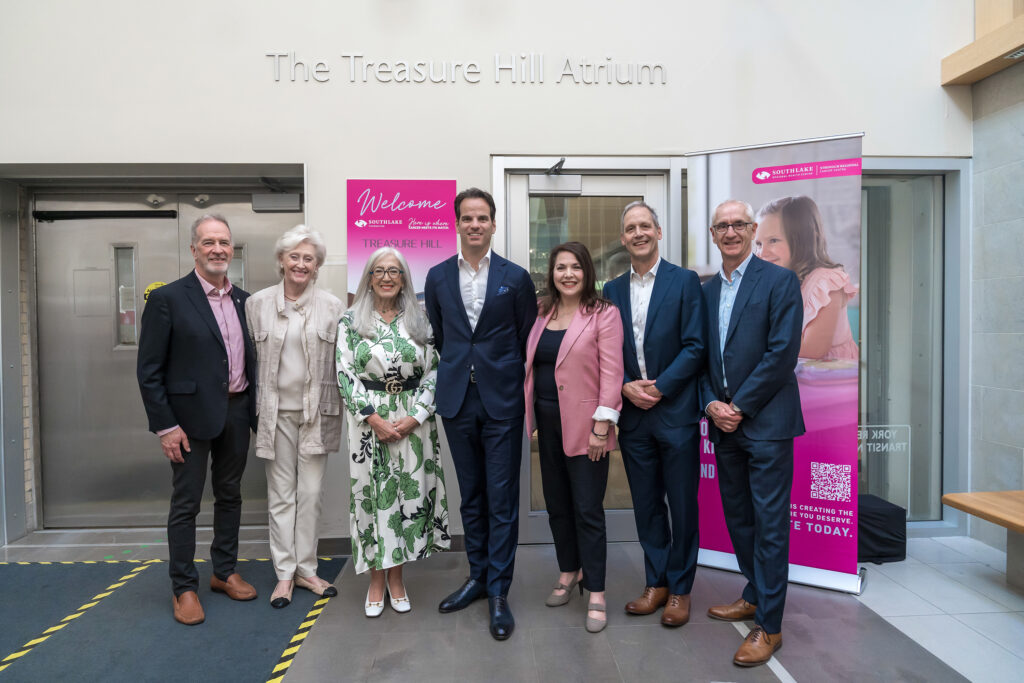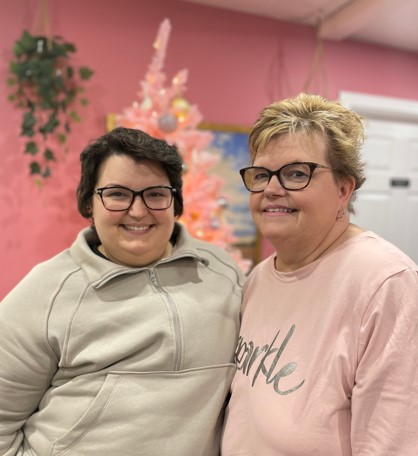Katie’s journey took her from cardiac nurse to patient.
Read the impact it had on her.
Since starting in Southlake’s Regional Cardiac Program as a Registered Nurse ten years ago, Katie knew she wanted to stay “with the heart.” What she didn’t expect was that she would see the program through the lens of a patient.
That was until a regular shift eight years ago when she sat down to complete a patient chart and started to feel unwell.
“I felt like I had been running a marathon, but I was sitting at a desk,” she recalls.
Katie’s colleague checked her pulse and, concerned, sent her immediately to Southlake’s Emergency Department. There, she was hooked up to an ECG monitor and learned she had Supraventricular tachycardia (SVT)—an arrhythmia that made her heart beat too fast. Katie felt nervous; she was told she would have to have a cardioversion—a shock to the heart to set it back to a regular rhythm.
“Even with all the cardiac knowledge I had as a nurse, I still felt scared.”
Over the next few months, Katie continued to have symptoms—feeling increasingly fatigued like she had just finished a race. Medications did not solve the problem and Katie visited Southlake’s Emergency Department frequently. She was only in her mid-20s, and SVT had begun affecting her day-to-day life.
“You never think that as a young person you are going to be affected by heart problems. It put me directly in the shoes of the patients I have been caring for,” said Katie.
Katie met with one of Southlake’s incredible electrophysiologists; a doctor who specializes in heart rhythms, who suggested she have an ablation—a procedure that burns the part of her heart causing the SVT. After an ablation, the problem seemed to be gone. However, a few years later, she was diagnosed with an atrial flutter.
She went to the Electrophysiology Lab at Southlake, where clinicians in the Cardiac Program dug a little deeper. After further diagnostics and medication, her clinical team determined a second ablation procedure would be necessary. Once complete, her cardiac issues were resolved.
“That time in my life, as a cardiac patient at Southlake, made me truly appreciate the care my colleagues provide to each and every patient that comes to us for care. The clinicians who cared for me were compassionate; they took the time to explain every aspect of my care to me—even though they knew I was also a clinician. They treated me like I was any other patient, and that meant I learned so much in my time in the program.”
Katie’s day-to-day life has returned to normal and she’s enjoying life. For Katie, receiving the phenomenal care she did—in the very program she loves and provides care in—was profoundly impactful.
“We always tell our community that you don’t need to go to downtown Toronto for advanced cardiac care. You can receive it right here at Southlake. Now, I know first-hand how life-changing that is. It’s so much more personal being cared for close to home,” shared Katie.
Katie now works as a Nurse Educator, helping bring new research and procedures from around the world to Southlake’s Regional Cardiac Care Program.
“We have a really advanced Cardiac Program. We’re doing things no one else, or very few institutions, are doing,” she says. “We know our program is capable of doing amazing things, and donor support makes it possible.”


